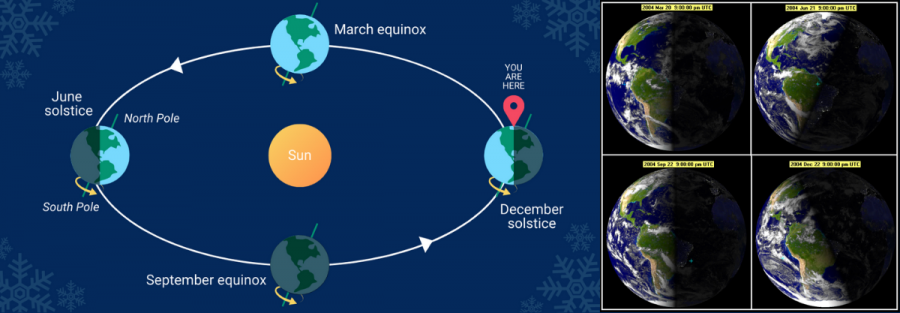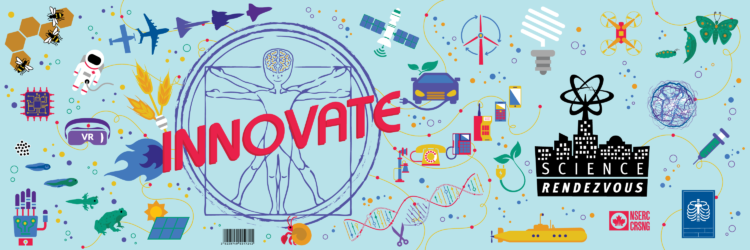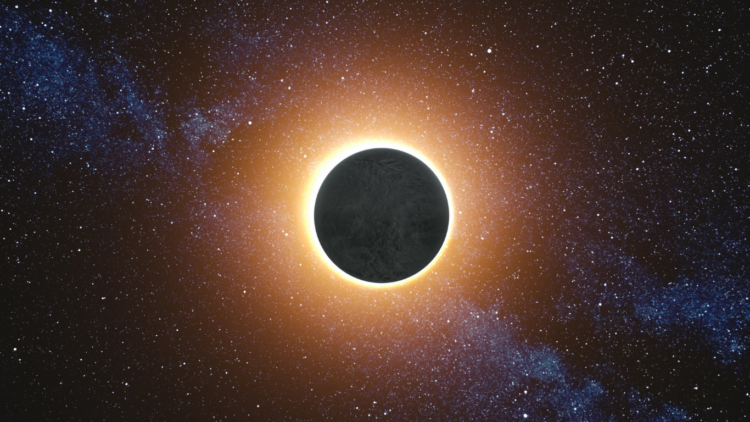Happy Winter Solstice, the first day of winter and the shortest day of the year! It may be winter here in Canada and the northern half of the globe, but it’s actually the summer in the Southern Hemisphere.
As the Earth orbits around the Sun on a slight tilt (23.4° angle), the North Pole is furthest from the Sun on the December solstice. The sun shines more directly on the Southern Hemisphere than on the Northern Hemisphere, making it winter in Canada. But if you dread the long nights, don’t worry! The winter solstice also means that the days will start getting longer again as we make our way towards the summer until the June solstice. On the longest day of the year (at least in the Northern Hemisphere), the exact opposite of the December solstice happens! The sun shines more directly on the Northern Hemisphere and the North Pole tilts closest to the Sun.

See if you can recreate this model with your family or siblings. One person can be the Sun and hold a lamp or flashlight. Another can hold onto a ball or any other light, spherical object. Mark the North and South Poles and see where the light falls as you tilt the ball and “orbit” around your Sun.
One of a kind December solstice
It’s also a special December solstice this year! Jupiter and Saturn will be the closest together in the night sky since 1623. Astronomers call it the Great Conjunction when Jupiter and Saturn get close together. This happens almost every 20 years, though how far apart they appear in the night sky changes. Once in awhile, Jupiter and Saturn can get so close, they look like a superstar! Look up to the sky shortly after sunset and look to the southwest for two bright objects side-by-side. Check out the Royal Astronomical Society of Canada and York Observatory for some amazing photos of this astronomical phenomenon!



































